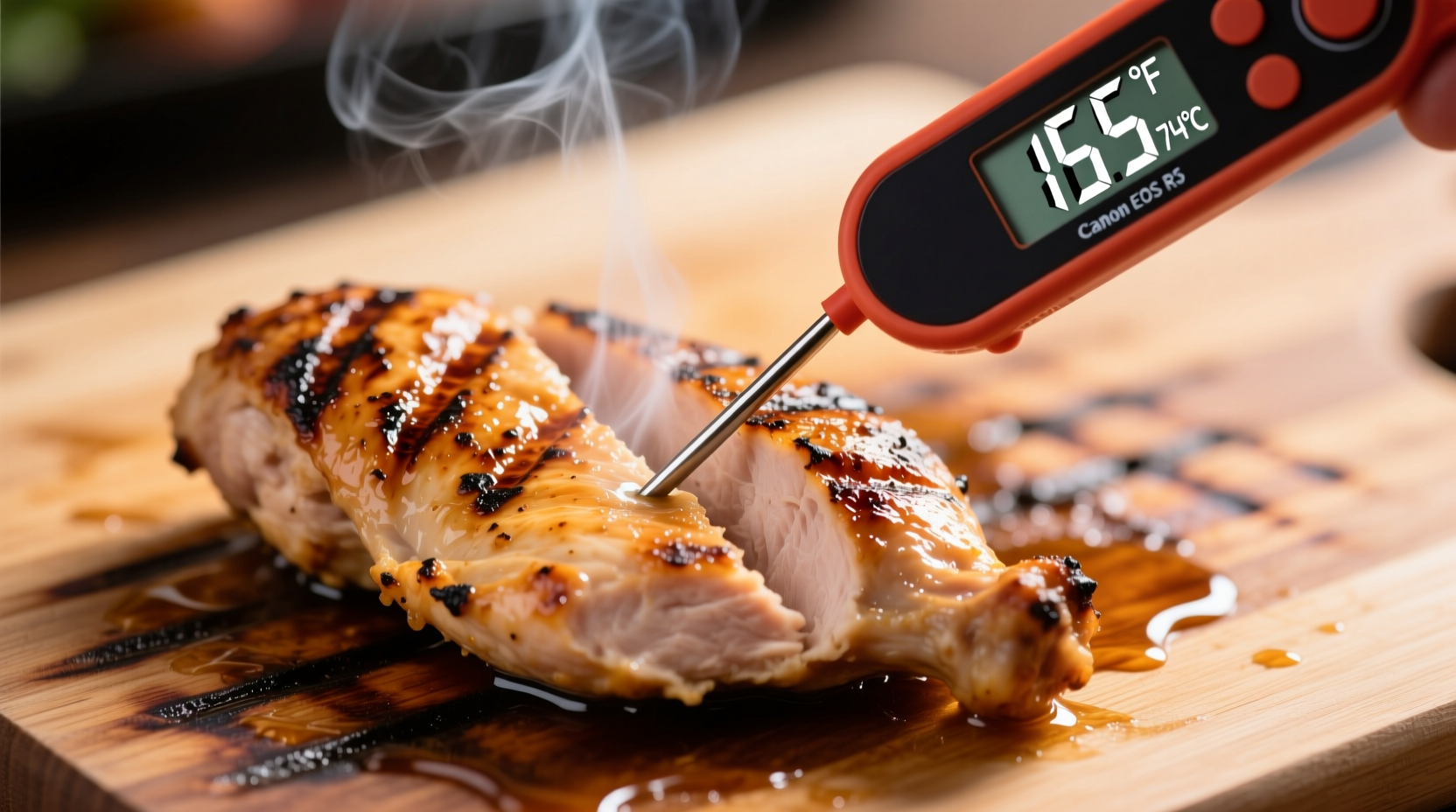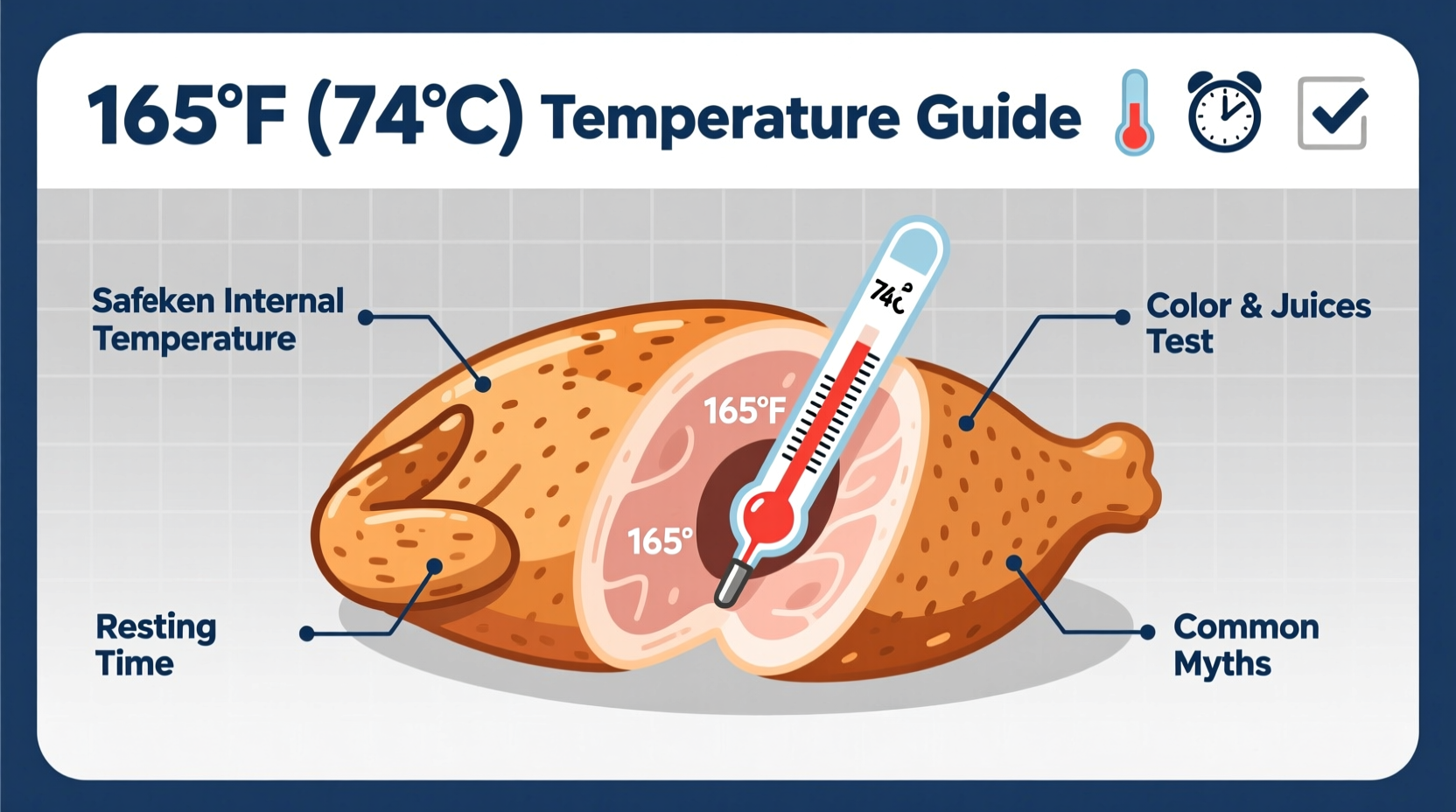The Science Behind Safe Chicken Cooking Temperatures
Understanding why 165°F (74°C) is the magic number requires examining food safety science. Pathogens like Salmonella and Campylobacter commonly found in poultry are destroyed almost instantly at this temperature. The U.S. Department of Agriculture's Food Safety and Inspection Service (FSIS) established this standard based on extensive research into pathogen destruction rates.
While some professional chefs may pull chicken at slightly lower temperatures for specific preparations, the 165°F guideline provides a critical safety margin for home cooks. This temperature accounts for variables like uneven heating, thermometer accuracy, and the need to eliminate pathogens throughout the entire piece of meat.
| Meat Type | Safe Minimum Internal Temperature | Rest Time After Cooking |
|---|---|---|
| Chicken (all types) | 165°F (74°C) | No rest required |
| Ground meats | 160°F (71°C) | No rest required |
| Beef, pork, veal, lamb (steaks, roasts) | 145°F (63°C) | 3 minutes |
| Fish | 145°F (63°C) | No rest required |
This official temperature guideline comparison from the USDA Food Safety and Inspection Service shows how chicken's required temperature differs from other meats. Unlike beef or pork that can be safely consumed at lower temperatures with proper rest time, chicken requires immediate pathogen destruction due to higher risk bacteria.
How to Properly Check Chicken Temperature
Accurate temperature measurement is crucial for food safety. Follow these steps for reliable results:
- Use a calibrated instant-read thermometer - Digital thermometers provide the most accurate readings
- Insert in the thickest part - Avoid bones, fat, or gristle which give false readings
- Check multiple spots - Especially for larger pieces like whole chickens or bone-in cuts
- Clean between measurements - Prevent cross-contamination by washing the probe
Many home cooks make the mistake of relying on visual cues like color or juices running clear. These methods are unreliable indicators of safety. The only way to confirm chicken is properly cooked is with a food thermometer.

Temperature Variations for Different Chicken Cuts
While the 165°F standard applies universally, different cuts require attention to specific measurement points:
- Chicken breasts: Measure in the center of the thickest part, avoiding the bone if present
- Thighs and drumsticks: Insert thermometer into the thickest part near the bone
- Ground chicken: Check multiple spots as heat distribution is uneven
- Whole chicken: Measure in both breast and thigh areas, as they cook at different rates
For sous vide cooking enthusiasts, chicken can be safely prepared at lower temperatures (145-150°F) but only with precise time controls. At 145°F, chicken must remain at that temperature for 8.5 minutes to achieve the same pathogen reduction as the instant kill at 165°F. This specialized technique requires careful timing and isn't recommended for most home cooks.
Common Temperature Mistakes and How to Avoid Them
Even experienced cooks sometimes fall into these temperature traps:
- Not waiting for the thermometer to stabilize - Wait 10-15 seconds for an accurate reading
- Measuring too close to the bone - Bone conducts heat differently than meat
- Checking only one spot - Temperature can vary significantly within a single piece
- Removing chicken too early - Remember that temperature continues to rise 5-10 degrees after removal from heat
The USDA updated its chicken safety guidelines in 2011, moving away from the previous recommendation of 180°F for whole chickens. This change reflected better understanding of pathogen destruction temperatures and the desire to prevent overcooking. Modern food safety science shows that 165°F provides adequate safety while preserving moisture and texture.
Practical Tips for Perfectly Cooked Chicken
Follow these professional techniques to achieve safe, delicious chicken every time:
- Let chicken rest after cooking - 5-10 minutes allows juices to redistribute
- Use carryover cooking to your advantage - Remove chicken at 160°F for final 165°F after resting
- Calibrate your thermometer regularly - Ice water (32°F) and boiling water (212°F) tests ensure accuracy
- Store leftovers properly - Refrigerate within 2 hours (1 hour if room temperature exceeds 90°F)
Remember that proper handling before cooking matters just as much as temperature during cooking. Always thaw chicken in the refrigerator, never on the counter, and avoid washing raw chicken which spreads bacteria through splashing water.
Frequently Asked Questions
Here are answers to common questions about chicken cooking temperatures:











 浙公网安备
33010002000092号
浙公网安备
33010002000092号 浙B2-20120091-4
浙B2-20120091-4